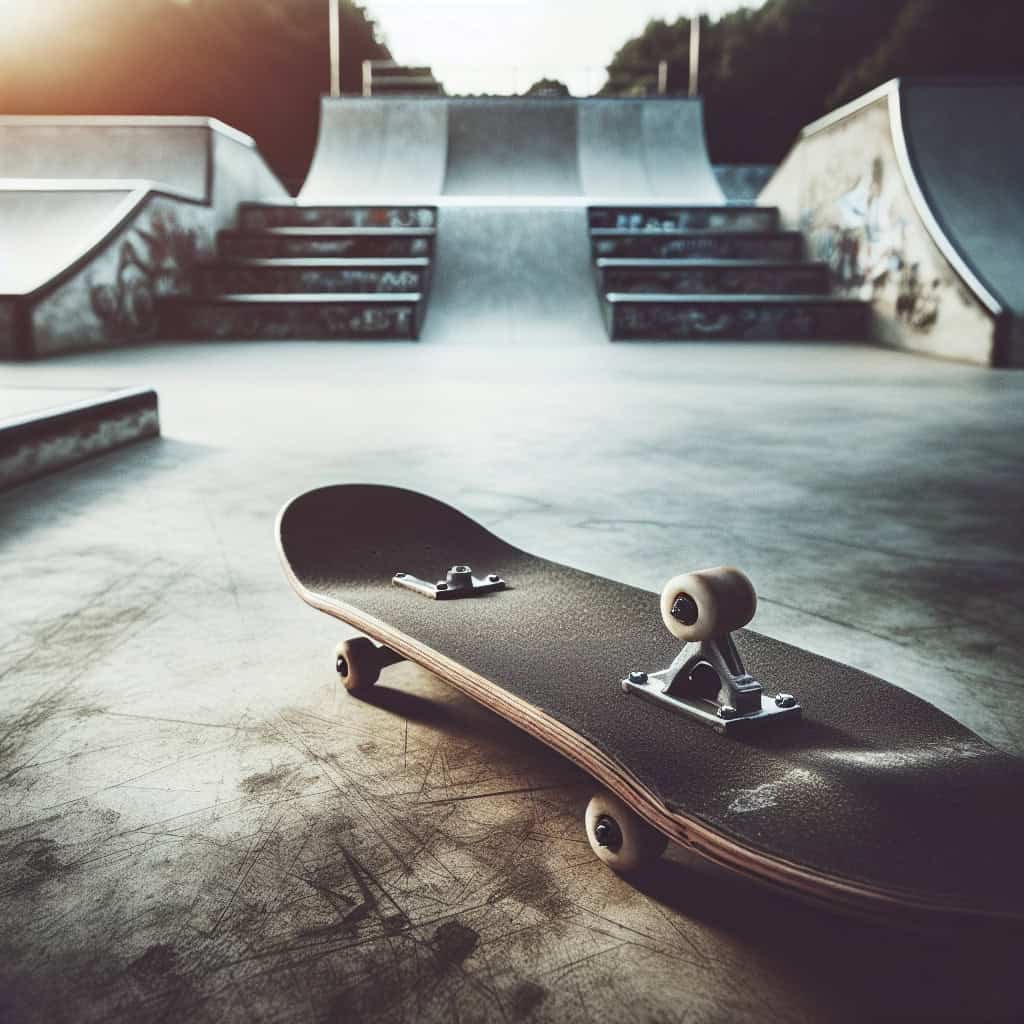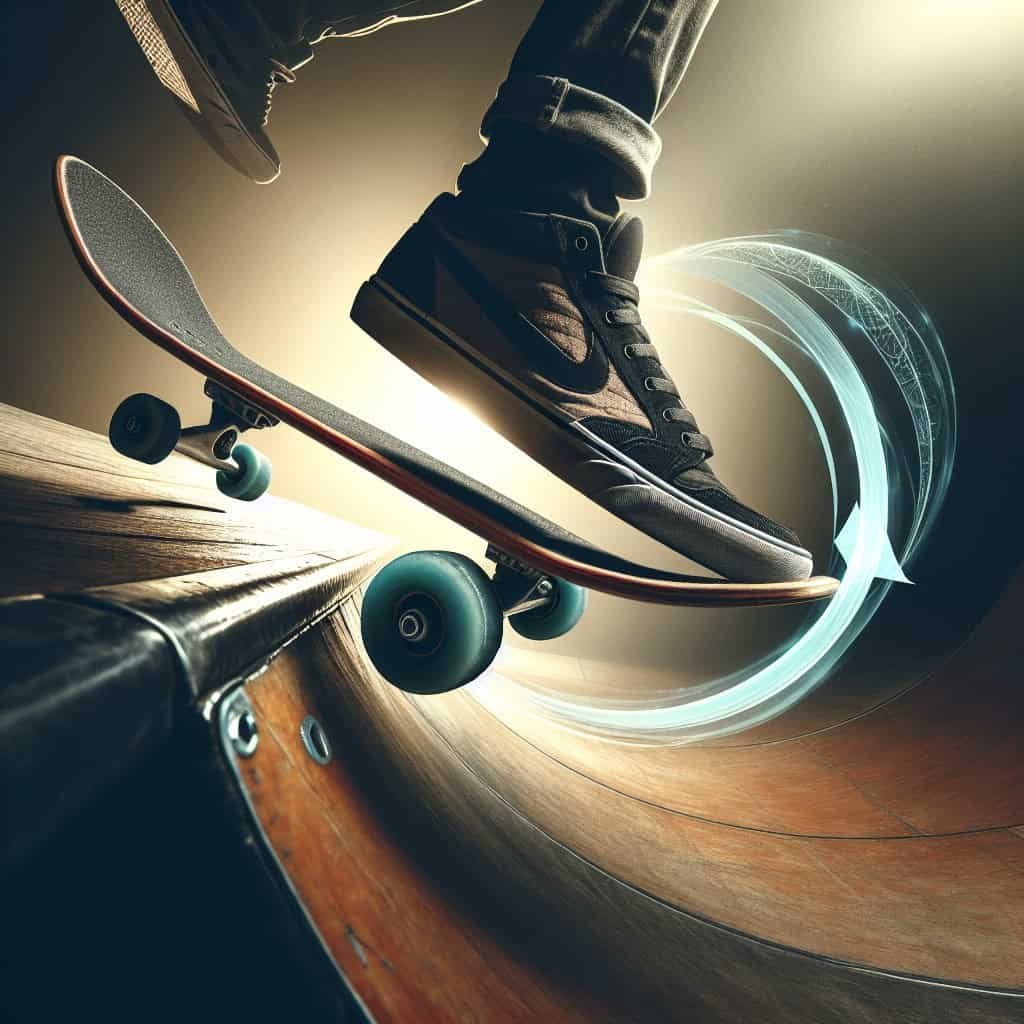If you’re an aspiring skateboarder looking to improve your skills in skating transition elements, you’ve come to the right place. This article will explore various strategies that can help enhance your ability to navigate ramps, bowls, and pipes with ease. From mastering proper body positioning to developing essential balance and control, we’ll unlock the secrets to conquering those tricky transitions and taking your skateboarding game to new heights. So, grab your board and get ready to elevate your skills to the next level!

Practice Techniques
1.1 Consistent practice
Consistency is key when it comes to improving your skateboarding skills, especially when it comes to skating transition elements. Dedicate regular time to practicing at least a few days a week. By committing to consistent practice, you allow your muscles to adapt and your body to develop muscle memory, which will make it easier for you to handle transitions. Set aside specific blocks of time in your schedule and make it a priority to practice during those times.
1.2 Focus on specific skills
Transition skating requires a unique set of skills that differ from street or ramp skating. To improve your ability to skate transition elements, it is important to identify and focus on the specific skills needed for this style of skating. Start by breaking down the different elements of transitions, such as pumping, kickturns, and dropping in. Practice each skill individually until you feel comfortable and confident. As you progress, you can start combining these skills to create more fluid and seamless transitions.
Mental Preparation
2.1 Visualize success
Visualization is a powerful tool that can help improve your skateboarding performance. Spend some time visualizing yourself successfully skating transition elements. Close your eyes and imagine yourself confidently dropping in, pumping through the transitions, and executing the tricks flawlessly. Visualizing success helps train your brain to focus on positive outcomes and boosts your confidence levels. Incorporate this mental preparation technique into your routine before each skate session and watch how it positively impacts your performance.
2.2 Overcome fear and anxiety
Skating transition elements can be intimidating, especially for beginners. Fear and anxiety can hold you back from fully committing to the tricks and maneuvers. It is important to address these feelings head-on and find strategies to overcome them. One effective technique is to start small and gradually build up your confidence. Begin with smaller transitions or ramps that feel more manageable and gradually work your way up to larger obstacles. Additionally, practicing mindfulness and deep breathing exercises can help calm your nerves and focus your mind while skating. Remember, fear is a natural reaction, but with practice and perseverance, you can conquer it.
Proper Equipment
3.1 Choosing the right skateboard
Selecting the right skateboard setup for transition skating is crucial for optimal performance and safety. When choosing a skateboard, consider the width and shape of the deck. Transition skateboarding typically requires wider decks (8.5 inches or wider) for stability and ample foot space. Additionally, consider the trucks and wheels. Go for wider trucks and softer wheels for better stability and smoother rides on transition elements. Make sure to consult with experienced skateboarders or skate shop professionals to ensure you select the appropriate equipment for your specific needs and preferences.
3.2 Using appropriate safety gear
Skateboarding, especially transition skating, involves inherent risks. To ensure your safety while practicing and performing tricks on transition elements, it is vital to wear appropriate safety gear. Invest in a high-quality helmet to protect your head from potential falls or collisions. Elbow and knee pads, as well as wrist guards, are also essential for preventing injuries. By wearing the right safety gear, you can confidently push your limits on transition elements, knowing that you have taken the necessary precautions to protect yourself from potential harm.
Learning from Others
4.1 Observing experienced skateboarders
One effective way to improve your ability to skate transition elements is by observing and learning from experienced skateboarders. Spend time at skate parks or watch online videos of professional or skilled transition skateboarders. Pay close attention to their body positioning, foot placement, and the way they approach and navigate transitions. Observing their techniques and strategies can provide valuable insights and inspiration for your own skating. Take note of the details and nuances in their movements and try to incorporate those into your own style.
4.2 Seeking guidance and feedback
In addition to observing others, seeking guidance and feedback from more experienced skateboarders can greatly accelerate your learning process. Don’t hesitate to approach skilled transition skateboarders at your local skate park or join skateboarding communities online. Ask for tips, advice, and feedback on your technique and tricks. This constructive criticism can help you identify areas for improvement and provide you with specific guidance to enhance your skills. Having a mentor or someone to guide you through the learning process can be invaluable in your journey to mastering transition elements.

Conditioning and Fitness
5.1 Strength and flexibility training
Transition skateboarding requires a combination of strength and flexibility. Engaging in targeted exercises to improve your strength and flexibility can significantly enhance your ability to skate transition elements. Incorporate exercises that focus on core strength, leg muscles, and upper body strength. Core exercises like planks and Russian twists can help improve balance and stability. Squats, lunges, and calf raises can strengthen your leg muscles, enabling you to generate power while skating. Additionally, regularly stretching your muscles will improve flexibility and help prevent injuries.
5.2 Cardiovascular endurance
Skateboarding, especially transition skating, can be physically demanding and requires sufficient cardiovascular endurance. Engage in activities such as jogging, cycling, or swimming to improve your overall cardiovascular fitness. By increasing your endurance, you will be able to skate longer and more efficiently on transition elements without feeling fatigued. Regular cardio workouts will also enhance your recovery time between tricks, allowing you to maintain a consistent practice schedule.
Progressive Skill Development
6.1 Starting with basic tricks
Building a strong foundation is crucial when learning how to skate transition elements. Begin by mastering basic tricks such as ollies, manuals, and kickturns on flat ground or smaller obstacles. These fundamental tricks will help you develop the necessary balance, control, and coordination required for transition skateboarding. As you become more comfortable with these basic tricks, gradually introduce them into your transitions, integrating them smoothly into your runs.
6.2 Gradually increasing difficulty
Once you have a solid grasp on the basic tricks, gradually increase the difficulty level of your tricks and transitions. Begin by tackling smaller and lower transitions before progressing to bigger ramps or bowls. Start incorporating more complex tricks such as airs, grinds, or lip tricks into your runs. The key is to push yourself out of your comfort zone while maintaining a safe and controlled approach. By gradually increasing the difficulty, you will steadily improve your skill set and expand your repertoire of tricks on transition elements.

Understanding Transition Elements
7.1 Study different types of transitions
To improve your ability to skate transition elements, it is essential to study and understand the different types of transitions you may encounter. Familiarize yourself with various transition features such as ramps, bowls, vert ramps, and halfpipes. Each type of transition requires a slightly different approach and technique. Research different skate parks or watch videos to gain a better understanding of how each type of transition flows and functions. By analyzing and studying these elements, you will be better prepared to adapt your skills to different skate park layouts and transitions.
7.2 Analyze transition features
Once you have a basic understanding of different transition types, it is important to analyze and identify specific features within each transition. Take note of the angles, curves, coping, and any unique elements that may affect your approach and execution of tricks. By paying attention to these details, you can adapt your technique accordingly and take advantage of the specific features of each transition. Understanding how transitions are built and designed will allow you to develop strategies to navigate them more effectively and creatively.
Safety Measures
8.1 Finding a suitable skatepark
Selecting a suitable skate park is crucial for practicing and improving your ability to skate transition elements safely. Look for skate parks that have well-maintained transitions, a variety of obstacles, and a layout that suits your skill level and preferences. Take note of skate park rules and guidelines to ensure a safe and enjoyable experience for everyone. If possible, visit different skate parks in your area to explore different transitions and find the ones that best accommodate your skill level and goals.
8.2 Inspecting and maintaining the skatepark
Before using a skate park, take the time to inspect the features and elements for any potential safety hazards or maintenance issues. Look out for cracks, uneven surfaces, loose screws or bolts, and any other signs of wear and tear. Report any concerns to the appropriate authorities or maintenance staff to ensure the safety of yourself and other skaters. Additionally, practicing proper skate park etiquette by taking turns and respecting fellow skaters will create a safer environment for everyone.

Fall Techniques
9.1 Learning how to fall safely
No matter how skilled of a skateboarder you become, falls and accidents are an inevitable part of the sport. Learning proper falling techniques can help minimize the risk of injury. When falling, try to roll with the impact to dissipate the force and distribute it across your body. Aim to land on the meaty parts of your body, such as your forearms and buttocks, rather than vulnerable areas like your wrists or elbows. Practicing falling techniques on softer surfaces or using protective padding can also help build confidence and minimize the impact of falls.
9.2 Practicing fall recovery
In addition to learning how to fall safely, it is essential to practice fall recovery techniques. Falling can often lead to losing momentum or balance, making it crucial to learn how to quickly regain control and continue skating. Practice recovering from falls by immediately getting back on your skateboard and continuing your run. Focus on regaining your balance and flow, and try to minimize any disruptions caused by the fall. By practicing fall recovery, you will build resilience and adaptability, allowing you to quickly recover from unexpected mishaps while skating transitions.
Building Confidence
10.1 Setting achievable goals
Setting achievable goals is an effective way to build confidence and track your progress in transition skateboarding. Start by setting small, attainable goals for yourself, such as mastering a specific trick or successfully completing a run without falling. As you achieve these goals, gradually increase the difficulty or complexity of your objectives. Celebrating each accomplishment along the way will boost your confidence and motivate you to keep pushing your limits. Remember to be patient with yourself and to celebrate even the smallest victories as they all contribute to your growth as a skateboarder.
10.2 Celebrating small victories
Transition skateboarding can be challenging, and progress may not always come as quickly as you would like. It is important to recognize and celebrate the small victories along the way. Whether it’s landing a new trick or conquering a particularly challenging transition, take the time to acknowledge your achievements and give yourself credit for your hard work and dedication. By focusing on your successes, you build a positive mindset and maintain a sense of enthusiasm and motivation to continue improving your ability to skate transition elements.

